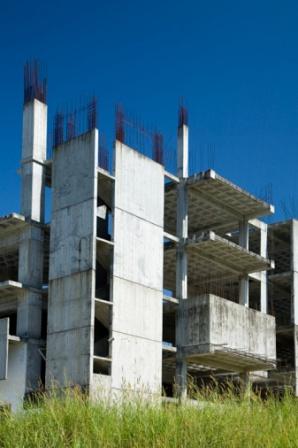

Printable PDF version
Subscribe to our newsletter
Market Conditions Update
Preconstruction
Services, Part 2
Green Concrete
Construction
Management Specialists
111 Pine Street, Suite 1315
San Francisco, CA 94111
(415) 981-9430
www.TBDconsultants.com
Market
Conditions Update
Gordon
Beveridge
The markets are in flux, and the construction market is no different than the rest. In this article Gordon looks at what is happening in the different sectors of the construction market, and looks at what we might expect from construction cost escalation.
Preconstruction Services, Part 2
Matt
Craske
Matt continues his look at the preconstruction services associated with the GMP delivery method, including value engineering, risk management, constructability reviews, and more.
Portland cement production can produce half a ton of carbon dioxide for a ton of cement, just from the super heated raw materials, plus another third of a ton of emissions from burning the fuels to heat the kilns. About 7% of global carbon dioxide emissions come from cement production. One way to make concrete more environmentally friendly is to use more efficient kilns and alternatives to fossil fuels as energy source.
Another popular option is to use fly ash (waste from power stations) or slag (from blast furnaces) to replace some of the cement. It is possible to replace up to about 20% of the cement in concrete with fly ash, and slag might replace up to 60%. Using fly ash or slag may not result in concrete of the same strength as using just cement, but is certainly suitable for non-structural uses such as paving and curbs. If you are looking for LEED points, these cement replacements count as post-industrial recycled content, and there is an innovation credit available for replacing over 40% of the cement.
New Scientist magazine reported that researchers in Australia and India have plans to capture the CO2 from the cement production and use it to grow microalgae, which in turn will be used to produce biodiesel, which then will heat the cement kilns.

An Australian company (www.Zeobond.com) is turning fly ash and slag into geopolymer concrete, releasing only about 15% of the greenhouse gases that regular Portland cement does. The company uses aluminates and silicates extracted from the waste that then combines to form a chain-like molecule called a polymer, and with suitable aggregates this can form geopolymer concrete.
Apart from the cement in concrete, some other green options include the rebar, which uses a high recycled content like almost all steel, the use of recycled aggregate, and using non-toxic retardant chemicals instead of acid washing. The use of titanium oxide in concrete can also help neutralize many of the pollutants in the air.
Design consultant: Katie Levine of Vallance, Inc.